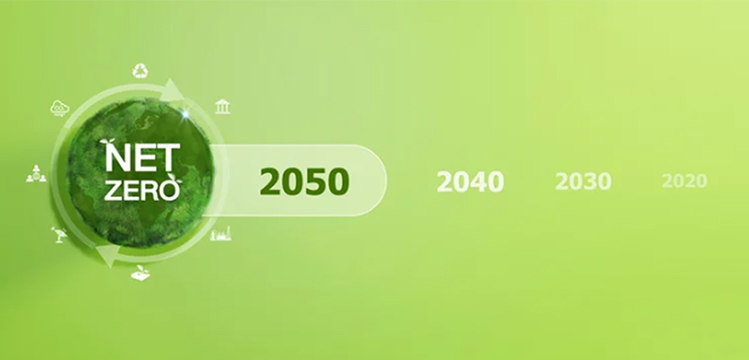Companies are under pressure to reduce their carbon footprint. This often limits their profits, and therefore affects the market's perception of their default risk. For Japanese companies, in recent years, the risk that default will occur is now found to be lower if the company has lower carbon emissions.

©︎ Smile Studio AP ― stock.adobe.com/jp
Global efforts to reduce greenhouse gas emissions and mitigate the effects of climate change have pushed many companies to prioritize decarbonization. In spite of this, companies with higher carbon emissions typically have higher growth and profitability. Correspondingly, such companies typically have a smaller default risk ー they are less likely to be unable to fulfil financial obligations to investors. A measure for the market perception of a company's default risk is provided by the so-called credit default swap (CDS), an insurance arrangement in which a protection seller receives regular payments called "spreads" from the company in return for compensation in the event of a debt default. In a recent study published in the Energy Economics, a research team led by Tatsuyoshi Okimoto from Keio University looked at the interconnection between corporate carbon emissions, revenue, and credit default swaps in Japan.
Okimoto first became interested in economics when he learned about time series analysis during a seminar in his third year of university. "I was captivated by the theory behind it and the applications," says Okimoto. "The appeal of financial econometrics is in extracting meaningful insights from data to solve real-world challenges."
The dataset used by Okimoto's research team, which also included Sumiko Takaoka from Seikei University, consists of carbon emission data, CDS spread data, and other corporate financial data of Japanese companies for the period 2005 - 2019. The companies represented all economic sectors. Okimoto and Takaoka first confirmed that carbon emissions indeed increase with revenue: an 1% increase in revenue corresponds to carbon emission increases by up to 0.838%.
To bring in the effect of pressure from investors to reduce corporate carbon footprints, the researchers included into their analysis the number of Japanese signatories of the United Nations Principles for Responsible Investment (PRI); the latter's goal is to evolve towards an economically efficient, sustainable global financial system. Okimoto and Takaoka found that as the number of PRI signatories grew, carbon emissions tended to decrease, except emissions of the 'Scope 1'-type: greenhouse gases resulting from burning fossil fuels and other production processes controlled or owned by the company in question. An explanation is that companies have already been trying to reduce this type of carbon emissions since the Kyoto Protocol agreement in 1997.
The researchers then looked at the relationship between carbon emissions and CDS spreads. They developed a time-varying model that enabled testing certain hypotheses. The first of these, claiming that investors see larger carbon emissions as a positive signal of a company's profitability, leading to a lowering of the company's CDS spreads, was found to hold in 2005. For more recent years, however, with increasing investor awareness of the dire consequences of climate change, two other hypotheses describe the situation better. Tighter regulations and higher carbon taxes ー referred to as carbon risk ー decrease the profits of carbon emitting companies, which results in higher CDS spreads. Conversely, companies with less carbon emissions have lower CDS spreads as such companies are perceived to present less carbon risk.
The findings of Okimoto and Takaoka show that carbon emissions significantly impact companies' CDS spreads, across all economic sectors, with investor awareness becoming a significant economic driving force. The researchers conclude that "decarbonization is essential not only to itself but also to its client or supplier companies, as supply-chain emissions matter in the process of calculating emissions for any company involved."
Notably, in this study the researchers used the number of PRI signatories to analyze changes in the carbon risk premium as a proxy for ESG investment progress and investor awareness. While this method has limitations, such as not fully capturing shifts such as those caused by the 2022 Russian invasion of Ukraine, it highlights the need for flexible analysis. ESG research is growing, yet areas like women's participation and human capital in Japan require further exploration. In the future, Tatsuyoshi Okimoto and his colleagues plan to provide insights that address these critical issues to contribute to the betterment of society.
Published online 28 August 2024
About the researcher

Tatsuyoshi Okimoto ― Professor
Faculty of Economics
Tatsuyoshi Okimoto received a PhD from the University of California, San Diego in 2005. He previously worked for the Australian National University, Hitotsubashi University, and Yokohama National University before joining Keio University in 2022. His research has centered on Financial Econometrics and Macroeconometrics. Prof. Okimoto was awarded the 1st GPIF Finance Awards (2017), the 2015 Nippon Finance Association Junko Maru Prize, and the 2014 Securities Analysts Journal Prize.
Links
Reference
- Okimoto, T., Takaoka, S. Credit default swaps and corporate carbon emissions in Japan. Energy Econ. 133, 107504 (2024). | article